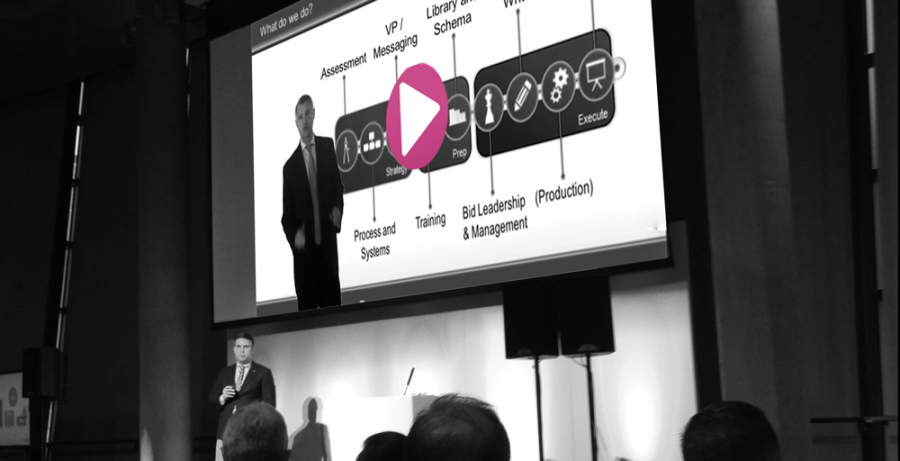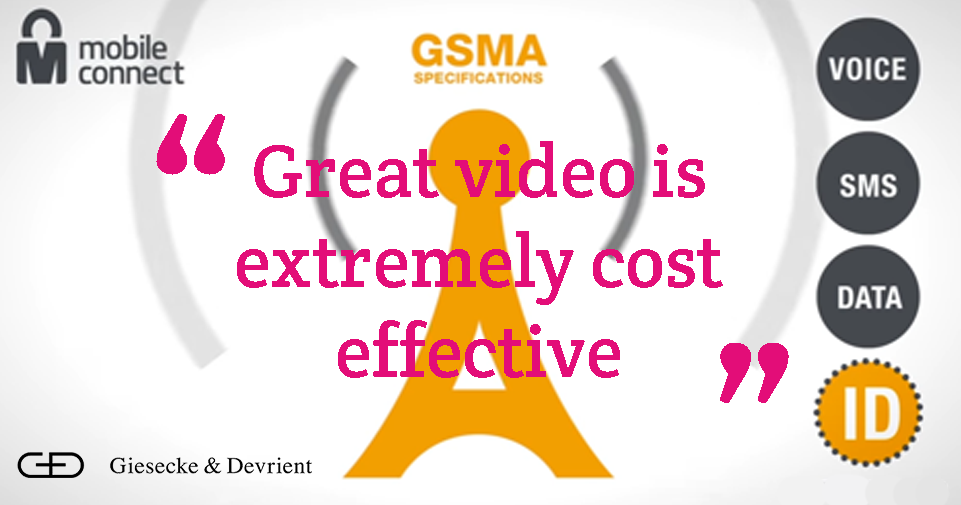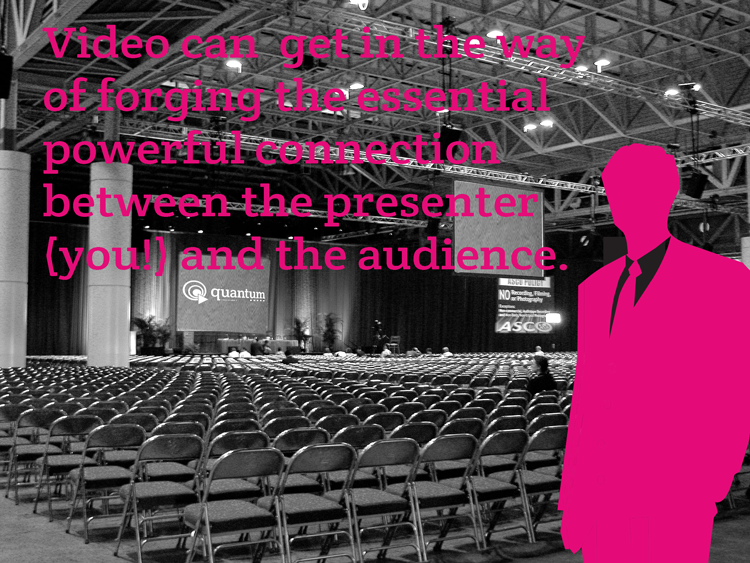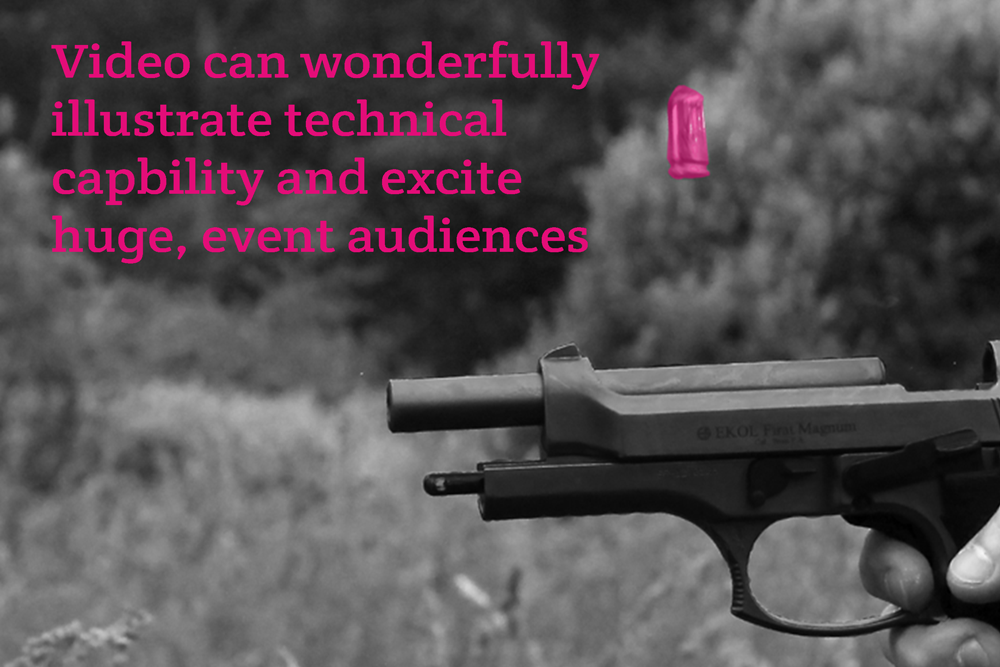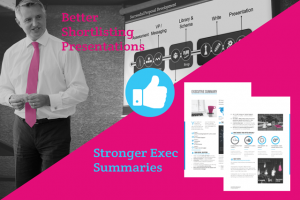Just a few years ago, commissioning a video for your company cost an arm and a leg, so video tended to be used pretty sparingly.
You might have been able to justify a £10k – £50k spend for the annual conference with some 250+ employees gathered in a swanky hotel, or for a must-win, high value sales pitch, but otherwise video was fairly scarce.
Now it’s cheap and ubiquitous and, increasingly, presenters feel that video should be integrated into their presentations to deliver the wow factor. But should it … should we use video in PowerPoint presentations?
The Arguments in Favour of Incorporating Video into your PowerPoint Presentations
- Video can be extremely impactful – especially when there’s a high-energy music track sat behind it
- A film gives the audience a bit of a break from the presenter, so mixes things up nicely
- The presenter gets a well-deserved rest whilst the audience sits back, relaxes and watches the video
- Video can really add to some presentations
- Commissioning a video is so affordable these days
- Even a non-technical presenter can usually work out how to incorporate video media into their presentations
- You might even be able to record the video in-house for free
So, it’s a no brainer, right?
The Arguments against Incorporating Video into PowerPoint
In fact, it’s definitely not a no-brainer!
We strongly advise that unless you are absolutely 100% certain that a video will add genuine value to your presentation’s audience you give it a wide berth. A very wide berth.
That might sound controversial, stupid even, but there is a very solid logic to our position. And the reason that we tend not to recommend incorporating video into your presentation lies in the understanding of what a presentation is.
Ask 100 presenters what a presentation is and they will say something like “my presentation is my slide deck” and they might go onto say “which includes a couple of nice videos to keep things sparky”.
But a presentation isn’t just a set of PowerPoint slides, or clipart, or diagrams or videos. Sure, all of these things can form part of “a presentation”, but the most important element of a good presentation is you – the presenter! (A human being).
If your audience comes away from your presentation remembering your key messages and is ready to take action, then you – the presenter – have successfully connected with the audience in a way that just isn’t possible using media alone.
Think about it. If media could “sell” independently there wouldn’t be a need for presenters or sales people. Marketing would just send out videos and slide decks to potential prospects and watch the orders roll in. But is doesn’t work like that; it can’t. Why?
A memorable presentation is You + Your Selected Media + an Engaged Audience.
That’s three quite distinct entities.
 Try to take out one of the three entities out of the equation and it just doesn’t work. You definitely can’t have a good presentation without an Engaged Audience. (Talking eloquently at your mirror really doesn’t count!).
Try to take out one of the three entities out of the equation and it just doesn’t work. You definitely can’t have a good presentation without an Engaged Audience. (Talking eloquently at your mirror really doesn’t count!).
However, you still might be able to make quite an impact if it’s just You (the Presenter) and the Audience without slides or any video.
This gives us a clue. Perhaps the least important – or the most dispensable – aspect of a presentation is therefore the media (PowerPoint, Prezi, video).
After all, some of the most memorable speeches and presentations that we remember didn’t have any media. Think JFK, Martin Luther King, Churchill – the great speakers and orators that memorised the crowd, those watching on TV or listening on the radio.
These impressive people had strong words, undoubted passion, a clear message and a well-defined call to action that made people want to change things. They didn’t use any slides or video. We aren’t recommending that you dump your media, but these memorable speakers didn’t let the lack of media reduce the power of their communications in any way. And, most importantly, they didn’t allow media to get in the way of forging a powerful, vital connection between the presenter and the audience.
It’s this connection – the key to any successful presentation to an audience – that is put at risk and jeopardised when video is introduced into the mix.
Let me explain:
- In the early minutes of a presentation the audience is trying to fathom their view of the presenter
- Do people in the audience feel they can trust you, that you are presenting something truly relevant and interesting to them?
- Without that essential trust connection people won’t buy from you or take the course of action you are recommending
- This trust connection is predicated on something personal and direct
- The audience needs to feel that you are saying something very personal; something that has been crafted specifically for them, something that you can flex and present in a way that suits them perfectly
- Playing a video during those first few minutes is a blocker – it hampers your making that all-important personal trust connection
- Unless you have created your video specifically for this audience and this event, video is perceived as “generic” – not personal to them – and your audience disengages and starts to turn off and away from you
- They might now be sitting back and relaxing but wouldn’t it be better if they were leaning forward and engaging with you – the presenter – in a positive and interactive way?
- If you lose your (“relaxed” = disengaged) audience in those first few minutes it’s almost impossible to win them back
Remember the old adage in sales: “people buy people”?
A video incorporated into a presentation takes you – one of those people – out of the equation at a critical moment. And your implicit message to your audience is that you don’t care about them enough to develop materials and messages that apply to their special, unique situation.
And if you don’t care enough about them, why should the audience care about you and your offer?
If in doubt drop the video!
When you Should consider Video
It would be easy to conclude from this that we are thoroughly opposed to the use of video in your presentations. But that’s not the case.
Video can be very powerful (just consider the incredible rise of YouTube), but as part of a presentation it has to be the right sort of video, played at the right time, in the right circumstances.
So, when can we effectively use video as part of a presentation?
- A high energy, attention-grabbing video right at the start of a major event with a large audience can be a great way of getting your “audience in the zone” (and hushing them – though technically this is before the main presentation!)
- When – but only after you have established that vital trust connection with your audience – a video can add something to the presentation that you might be otherwise be unable to add yourself
- How far into the presentation is this? The answer depends on what you are presenting, but the signals will be clear enough – if your audience has been attentive, is alert, and is now starting to nod in agreement to your points then you have won sufficient trust
- You might be making a very technical claim in your presentation that requires lots of data to prove it. An alternative way of offering the requisite proof might be to show a very short, high impact clip. For instance, if you are presenting a bullet proof glass product to a security group, why not show a 10 second clip of your glass being shot at close range with a big gun and withstanding the bullet. How effective would that be?! (That’s literally a high impact clip!)
Summary
- We live in a multi-media age where pizzazz and showmanship gets us noticed
- Video is cheap and can easily be incorporated into presentations
- It’s tempting to put video into presentations (and gives you a break from high octane presenting)
- But proceed with knowledge and caution …
- You – the presenter – must win a trusted connection with your audience
- Without that trust connection, the audience won’t take action after your presentation
- Video can block the creation of the trust connection
- Once an audience is lost it’s usually lost for good and the presentation was a waste
- Reserve video for big, show case events
- Use short, punchy, powerful complimentary clips only once you have forged the trusted connection with your audience when a video can add something special (as with the bullet proof glass scenario)
Could we help?
We assist organisations create compelling presentations for their audiences. And we develop promotional and technical videos too. So if you are uncertain whether to include a video – or what sort of video – as part of your next important presentation we might be able to help.

